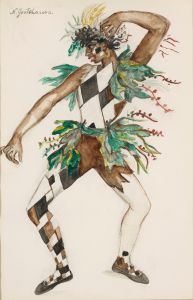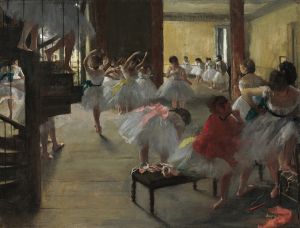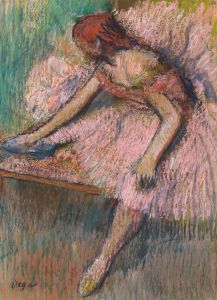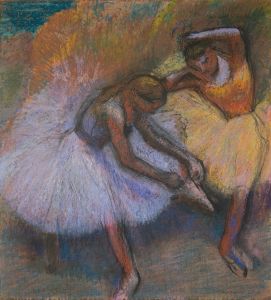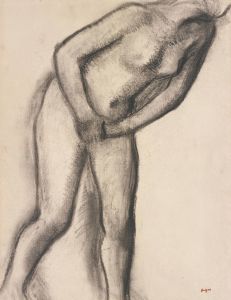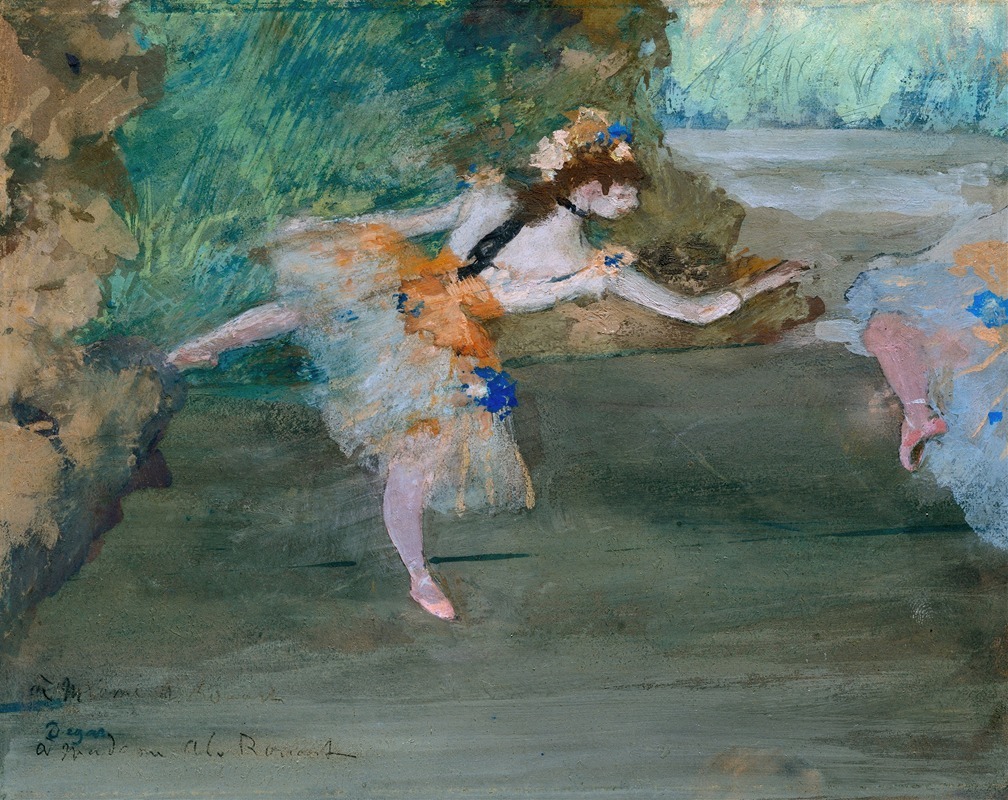
Dancer Onstage
A hand-painted replica of Edgar Degas’s masterpiece Dancer Onstage, meticulously crafted by professional artists to capture the true essence of the original. Each piece is created with museum-quality canvas and rare mineral pigments, carefully painted by experienced artists with delicate brushstrokes and rich, layered colors to perfectly recreate the texture of the original artwork. Unlike machine-printed reproductions, this hand-painted version brings the painting to life, infused with the artist’s emotions and skill in every stroke. Whether for personal collection or home decoration, it instantly elevates the artistic atmosphere of any space.
"Dancer Onstage" is a renowned painting by the French artist Edgar Degas, who is widely celebrated for his depictions of dancers and the ballet. Degas, a prominent figure in the Impressionist movement, is known for his innovative compositions and his ability to capture the movement and grace of his subjects. Although the exact date of "Dancer Onstage" is not definitively known, it is believed to have been created in the late 19th century, during a period when Degas was intensely focused on ballet as a subject matter.
Degas was fascinated by the world of ballet, and he frequently visited the Paris Opéra to observe and sketch the dancers. His works often depict dancers in various stages of performance and rehearsal, capturing both the elegance and the rigorous discipline of ballet. "Dancer Onstage" is a quintessential example of this interest, showcasing a dancer poised in the midst of a performance.
The painting is characterized by Degas's distinctive use of color and light, which he employed to convey the atmosphere of the theater. The dancer is typically depicted in a tutu, with the stage lights casting a glow that highlights her form against a darker background. This contrast not only emphasizes the dancer's movements but also draws attention to the ephemeral nature of performance. Degas's technique often involved layering pastels to achieve a rich texture and depth, a method that is evident in the vibrant hues and dynamic composition of "Dancer Onstage."
Degas's approach to composition was influenced by his interest in photography and Japanese prints, which is reflected in the unconventional angles and cropping seen in his work. In "Dancer Onstage," the perspective may be slightly off-center or from a viewpoint that suggests the observer is part of the audience, adding a sense of immediacy and intimacy to the scene. This compositional choice allows viewers to feel as though they are witnessing a fleeting moment in time, a hallmark of Degas's style.
The painting is also notable for its focus on the individual dancer, rather than a group, which was a common theme in many of Degas's works. This focus allows for a more detailed exploration of the dancer's pose and expression, capturing the concentration and dedication required in ballet. Degas's attention to detail and his ability to convey the physicality of dance have made his works enduringly popular and influential in the art world.
"Dancer Onstage" is part of a larger body of work by Degas that explores the world of dance, and it continues to be celebrated for its artistic innovation and insight into the life of dancers. The painting, like many of Degas's works, is held in high regard and is featured in various art collections and exhibitions around the world, contributing to Degas's legacy as one of the foremost artists of his time.





